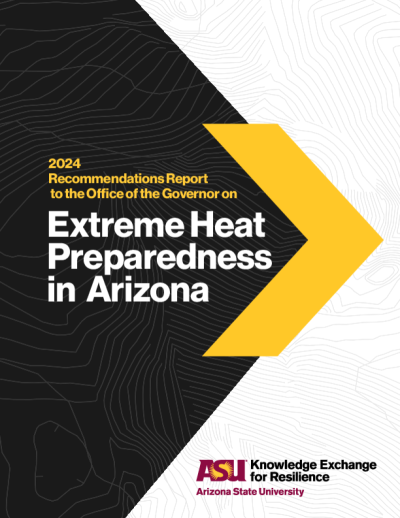Filtering by

According to the Centers for Disease Control and Prevention (CDC), more people die in the U.S. from heat than from all other natural disasters combined. According to the Environmental Protection Agency (EPA), more than 1,300 deaths per year in the United States are due to extreme heat. Arizona, California and Texas are the three states with the highest burden, accounting for 43% of all heat-related deaths according to the CDC.
Although only 5% of housing in Maricopa County, Arizona, is mobile homes, approximately 30% of indoor heat-related deaths occur in these homes. Thus, the residents of mobile homes in Maricopa County are disproportionately affected by heat. Mobile home residents are extremely exposed to heat due to the high density of mobile home parks, poor construction of dwellings, lack of vegetation, socio-demographic features and not being eligible to get utility and financial assistance.
We researched numerous solutions across different domains that could help build the heat resilience of mobile home residents. As a result we found 50 different solutions for diverse stakeholders, budgets and available resources. The goal of this toolbox is to present these solutions and to explain how to apply them in order to get the most optimal result and build About this Solutions Guide People who live in mobile homes are 6 to 8 times more likely to die of heat-associated deaths. heat resilience for mobile home residents. These solutions were designed as a coordinated set of actions for everyone — individual households, mobile home residents, mobile home park owners, cities and counties, private businesses and nonprofits serving mobile home parks, and other stakeholders — to be able to contribute to heat mitigation for mobile home residents.
When we invest in a collective, coordinated suite of solutions that are designed specifically to address the heat vulnerability of mobile homes residents, we can realize a resilience dividend in maintaining affordable, feasible, liveable housing for the 20 million Americans who choose mobile homes and manufactured housing as their place to live and thrive.

This report describes study work and results of KER and AAMHO collaboration over 2022 following up with recommendations and future plans. It includes new data, research publications and media coverage that supported this work in collaboration between the university and community partners for resilience in Arizona.

In the face of profound shock and change, individuals, organizations, and communities are seeking new ways to prepare for an uncertain future, their only certainty being that the present trajectory of change will intensify. Pandemics, wildfires, heat waves, hurricanes, flooding, social unrest, economic strife, and a rapidly changing climate system comprise a resounding wake up call: we must reinvent our institutions to think about and act with a resilient mindset. The purpose of the playbook is to support these efforts and build stronger, adaptive, and resilient communities.



Provides eviction models emanating from COVID-19 for the greater Phoenix, Arizona area.

Describes the LIHEAP benefits distributed to electric utilities companies in Arizona for fiscal year 2019.

Innovation studies provide a framework to reflect on potential solutions to reduce vulnerabilities to shock and stress. Solutions identified in the literature, empirical and theoretical, suggest a critical role is played by different types of innovation in the transition to more resilient and innovative communities. This paper examines the role of innovation for building community resilience.